With its many keys, hundreds of strings, hammers, and other pieces, the piano can seem a bit daunting when you first sit down to play. It’s also a very large instrument and if you have one and want to clean it, it helps to know what each piece does and recognizing when there’s an issue and how best to fix it.
In this post, we’re going to take a look at all the different parts of a piano, what and where they are and their function. Let’s jump in.
Anatomy of a Piano
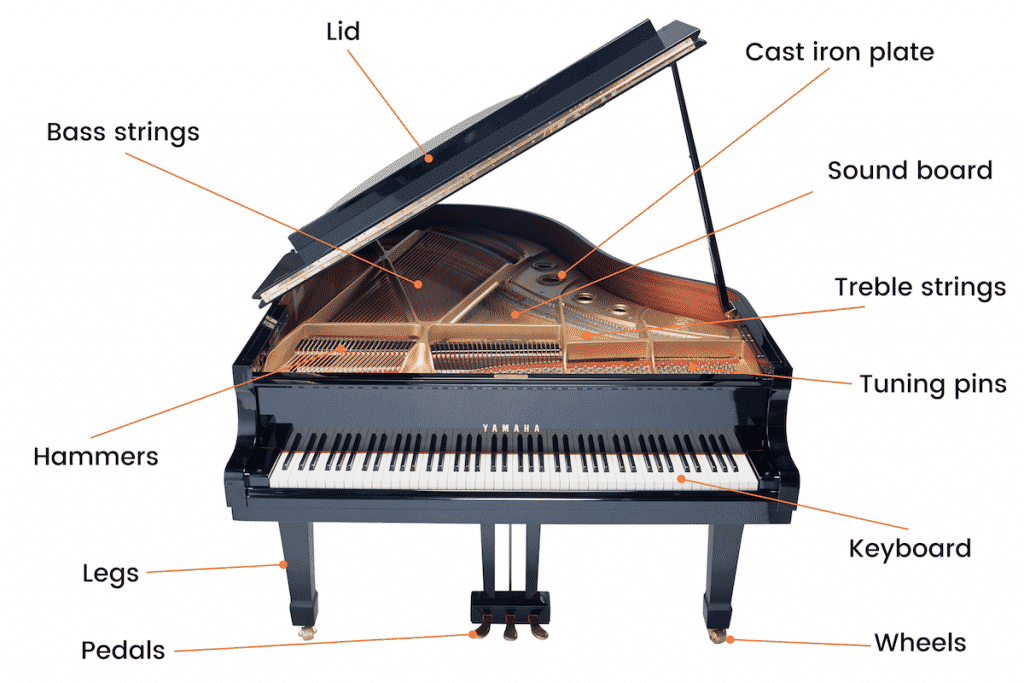
The piano is a very complex instrument with lots of moving parts and is made up of hundreds of strings.
In this article, we’ll be covering the anatomy of a grand piano but most of the principles apply to upright pianos too.
They will typically just be found in a different place.
Casing and Lid

The first part of the piano that we’ll cover is the Casing and Lid which is an essential piece as it’s the shell that protects a lot of the other parts.
Typically made of wood, they are often constructed by gluing thin layers together and then covering with a veneer.
To get the shiny look, they are sanded multiple times until it’s completely smooth and then usually coated with layers of polyurethane which is the shiny black coating found on most pianos.
The lid on pianos can be opened or closed to allow more of the sound to get out during performance and for ease of access during tuning.
The Keyboard
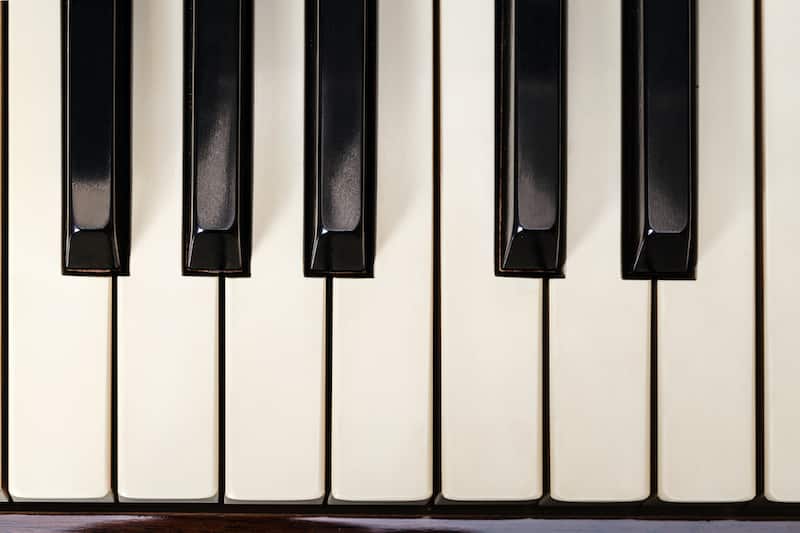
The Keyboard is probably the most familiar part of the piano as this is where most of the interaction takes place.
Most pianos will have 88 keys made up of 52 white keys and 36 black keys.
These are how musicians play different pitches of notes by pressing each key down.
Nowadays, piano keys are made of plastic but before the 1970s they were often made from ivory and ebony which was eventually banned due to the illegal poaching of elephants that it encouraged.
The Hammers
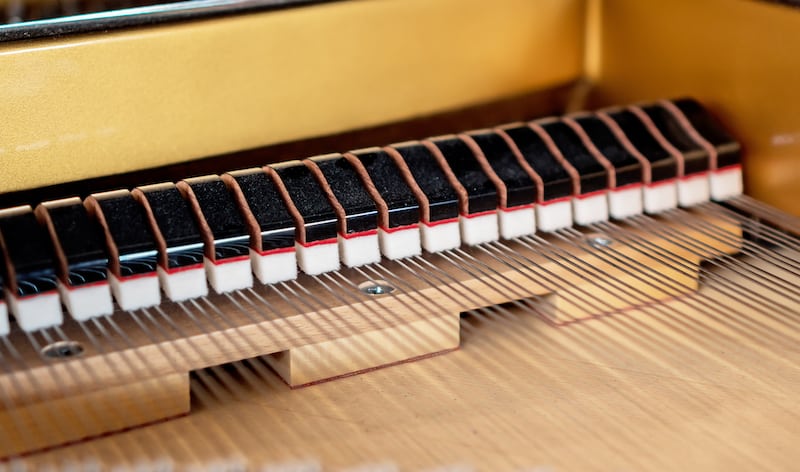
The piano is often thought to be a string instrument but the Hammers are the part of the piano that classify it as a percussion instrument.
When a key is pressed, it causes the hammer to hit the strings (which we’ll look at next) which in turn causes the sound to be made.
They have lots of smaller parts but are usually made of wood with the part that comes in contact with the strings is made from felt to give the piano its unique sound.
The hammers can come in a variety of different sizes for a piano.
The hammers used for bass notes are a bit larger as they require more weight for the larger bass strings than the thinner treble strings.
The Strings
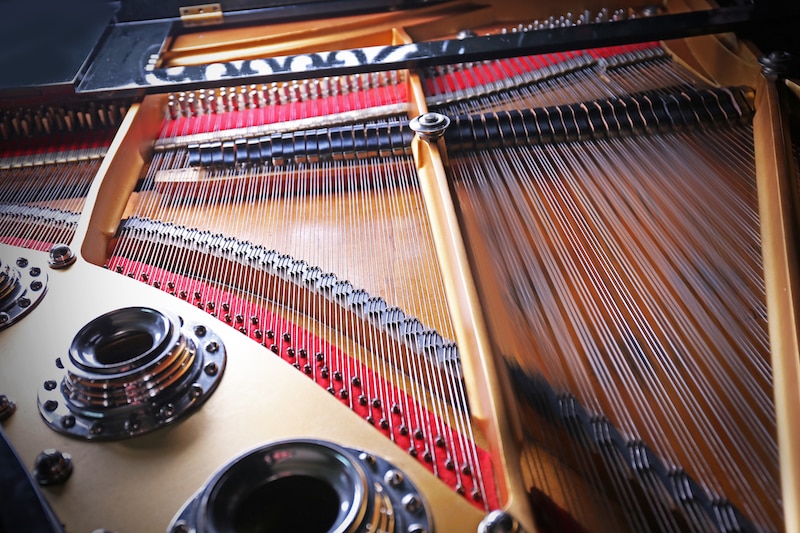
The strings are long steel wires that are the part of a piano that actually makes the sound.
When a key is pressed, the hammer then hits them which causes them to vibrate and create a sound.
There are strings of varying lengths depending on which note it’s made for.
The lower-sounding bass strings are thicker and longer whereas the higher pitched top strings are shorter and thinner.
As you can see in the image above, each note is actually made up of three strings not one, except the lowest notes which have two strings and sometimes only one!
The Soundboard
There’s a reason the sound produced from the strings resonates when hit which is because of the soundboard which plays a significant role in creating that unique piano tone.
Soundboards are made from a large piece of wood because this material increases the echo of lower pitches and reduces reverberation of higher frequencies.
That’s why instruments like violins, guitars, cellos are all made out of wood.
The Pedals
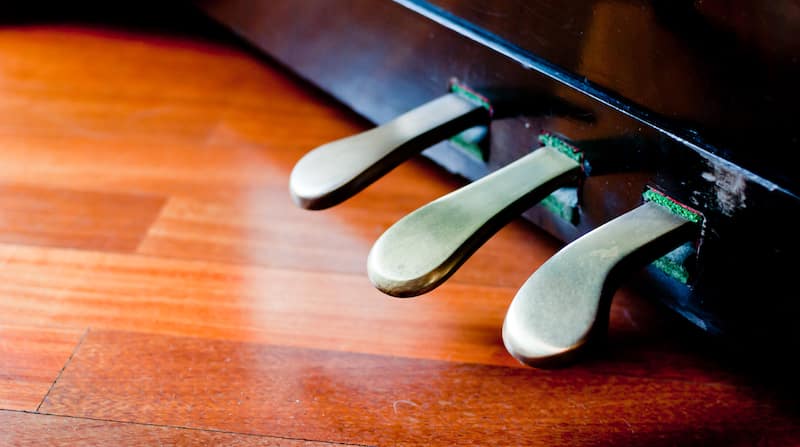
Most of the time, a piano is built with three pedals: the soft, sostenuto, and sustain pedals.
The leftmost pedal is the soft pedal, also known as the una corda which means one string.
When depressed, the soft pedal causes the piano to play softer and with a different timbre.
What it actually does is shift the action and hammers over slightly so that they only hit one string or ‘una corda’.
The pedal furthest to the right is the Sustain Pedal which causes tones to resonate much longer or to be ‘sustained’.
The Sostenuto Pedal is the middle pedal and was the most recent addition to piano pedals and isn’t found on every one.
Despite being called the sostenuto pedal (which means sustained) it actually only sustains notes that were already played.
So if the pianist were to play a chord and then press the sostenuto pedal down, these notes would be sustained but any subsequent notes would not be sustained.
Tuning Pins
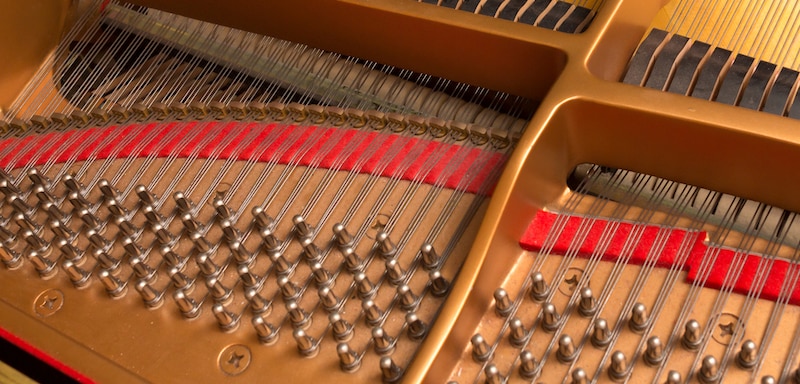
The Tuning Pins on a piano are used to tune the strings so that they sound at the correct pitch.
When they are turned it causes the string to become longer or shorter depending on which way they are turned – raising or lowering the pitch.
At the other end of the string, it’s tied to the hitch pin but this end doesn’t twist like the tuning pin and is just there to hold the string in place.
In between these two parts are more components that contribute to holding the wire in place without disrupting the sound it’s supposed to make.
Tuning a piano is an incredibly difficult skill to learn and so should be left to a professional piano tuner.
The Bridge
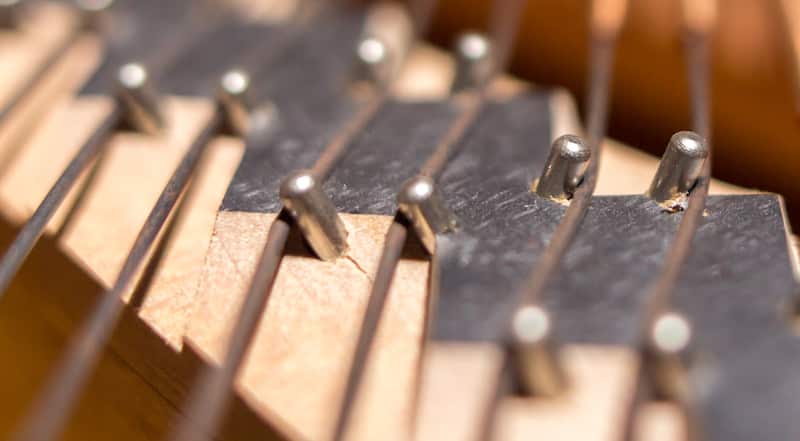
Most string instruments, like the violin or cello, have a bridge which is the wooden part that the strings rest on over the body of the instrument.
The piano is no different and typically will have two bridges, one for the bass and tenor strings and one for the treble strings.
It’s a thin piece of wood that runs across the strings.
Its job is to keep the strings in place and to transfer the vibrations of the strings to the soundboard acting as a bridge between the two to amplify the sound.
Additional Technical Parts
There are many more pieces that help make up this instrument, including these:
- Key block: These are two blocks of wood found on either side of the keyboard to help keep the keys in place.
- Action: That’s the name of the entire mechanism responsible for the hammer hitting the strings.
- The keyboard cover: Companies usually build this component as part of the instrument because it protects the keys when the piano is not in use.
- Legs: Mostly found on certain kinds of pianos, like grand pianos, this item provides an aesthetically pleasing foundation for the instrument.
- Wheel: A heavy instrument like this benefits from this component when you need to move it a short distance.
- Muffler felt: When you push the soft pedal down, it lowers this component and gets between the hammer and strings to give that dampening effect on the notes
Summing up the Piano’s Parts
That’s it for our article on the different parts of a piano, we hope it helps explain somewhat everything does and where it is.
It’s not to say that knowing the names and functionalities of all the parts means that you can go around fixing grand pianos.
However, it’s a good idea to expand your knowledge of the piano beyond its 88 keys.
If you need a replacement part after finding out there’s something wrong with your piano keyboard, for instance, you might need to know the name of the component that needs to be fixed or replace.
It’s also beneficial for understanding what your professional piano tuner is talking about while they’re working on your piano.

